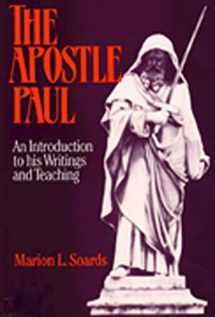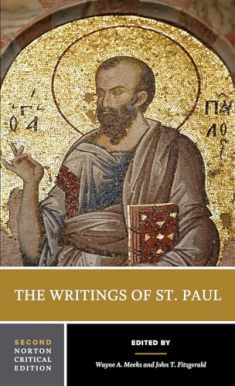
The Apostle Paul: An Introduction to His Writings and Teaching
Book details
Summary
Description
"Why another book on Paul?" may be the justifiable reaction of those finding this book on a bookstore or library shelf. Even a cursory survey shows there is already a spate of volumes on Paul available to those interested in learning more about the Apostle to the Gentiles. To paraphrase Qoheleth (loosely), " Of the writing of books on Paul there is no end" (Eccl 12:12)
So, why this book on Paul? Perusal of the platoon of Paul books shows that the works fall into three categories: scholarly monographs, collected essays, and books for a mythical general audience. Whatever the character of these contributions, they usually seek to serve one of three aims: to produce a life of Paul, to examine a letter or the letters of Paul, or to summarize Paul's theology in general or on some particular point. Rarely, a book pursues two goals, as does Gunther Bornkamm's Paul, which treats both Paul's life and his theology. Perhaps Bornkamm's ambitious format as much as the quality of his scholarship has made his book the standard text for Paul courses for more than a decade. The book continues to be the standard introductory text to Paul despite being the product of an interpretative approach that the majority of contemporary critical scholars considers to be less-than-adequate. And so, teachers and students of Paul cry out for a new text.
The Apostle Paul is, on the one hand, daring, and, on the other, reckless in seeking to speak to all three areas of Pauline studies------life, letters, and theology. With the overload of Paul books, nothing short of this approach seems suitable for a new book on Paul. Paul's life, letters, and theology must be treated together, since to do otherwise is to risk distorting one or more of the areas of Pauline studies. Moreover, one encountering Paul needs information regarding all three areas, and no such book exists------especially one that understands Paul from the apocalyptic perspective which characterizes this study.
Thus, even though there are perils in this Pauline project, the task is undertaken. The format and much of the contents of this book developed and were refined in teaching Paul to both advanced undergraduate students and primary level (on Paul) seminarians. To those partners in Pauline studies at Louisiana State University and Union Theological Seminary, New York, I owe thanks for the motivation to produce this work designed to introduce the mission and message of one whose labors and thinking form an essential part of the foundation of all subsequent Christianity.
The work of many scholars influenced much of the understanding of Paul set forth in this book. Among those to whom I am particularly beholden are J. Christian Beker, Dieter Georgi, Ernst Kasemann, Leander E. Keck, Helmut Kowester, Wayne A. Meeks, and, above all, J. Louis Martyn. Experts in biblical studies will recognize my indebtedness to these and many others, but in consideration of the nonprofessional readers, I have not freighted this work with scholarly footnotes; yet those readers who desire to plunge deeper into Pauline studies will find pointers in the bibliographies included throughout the book.


We would LOVE it if you could help us and other readers by reviewing the book
Book review





